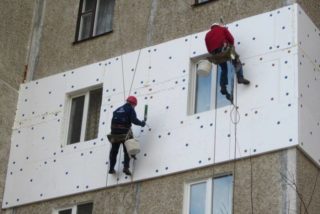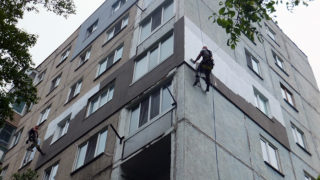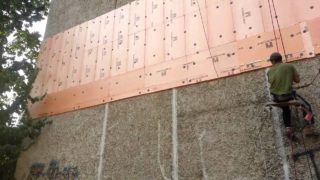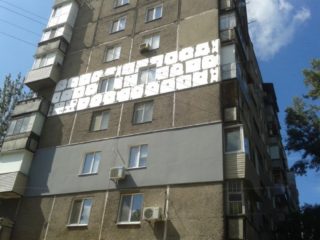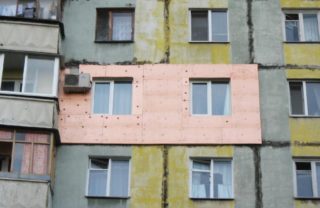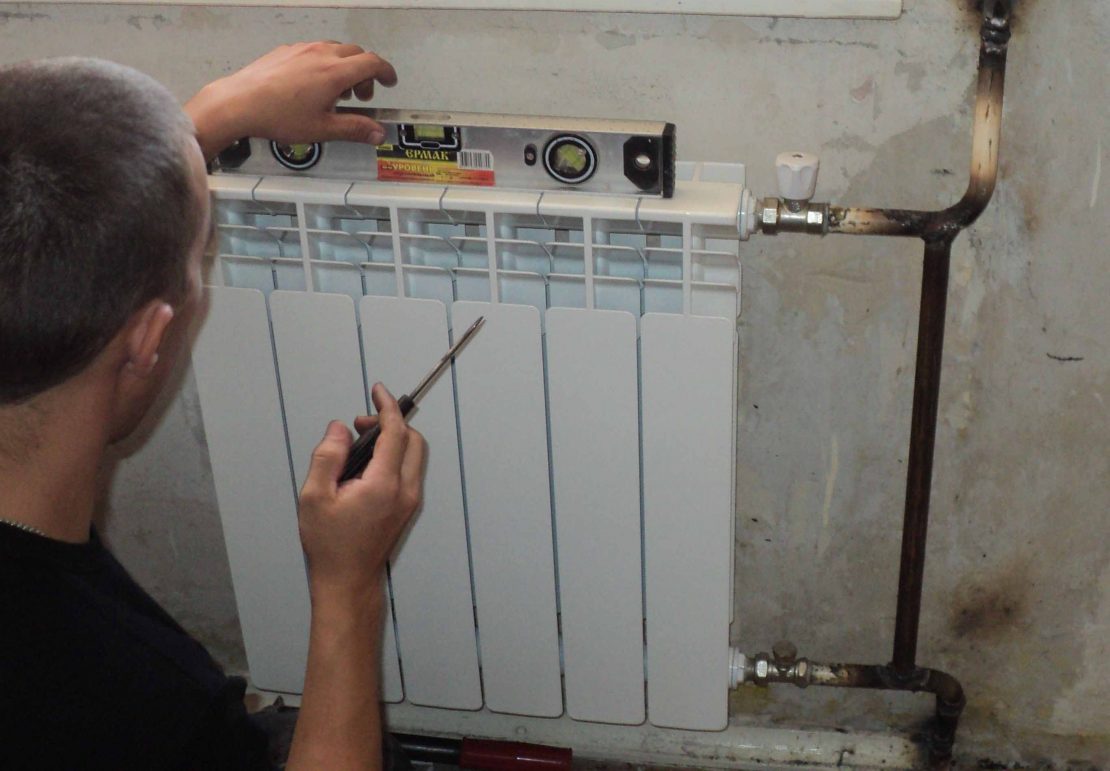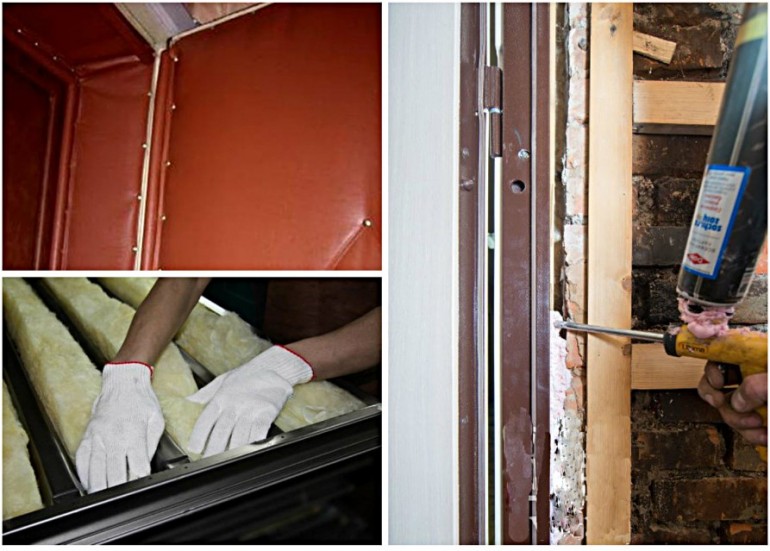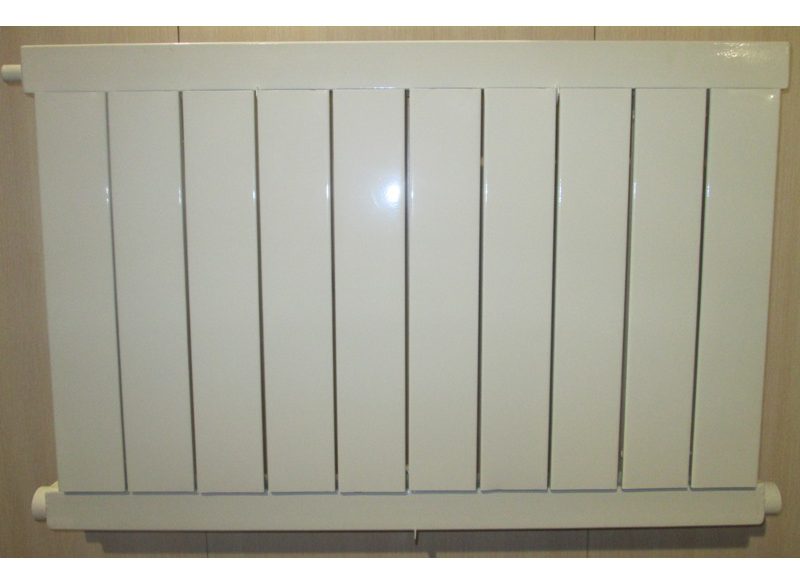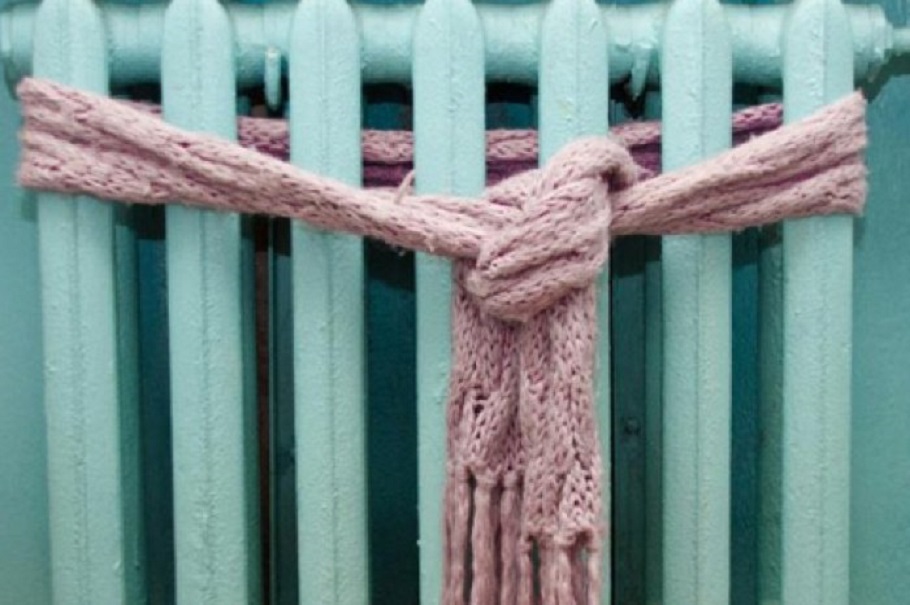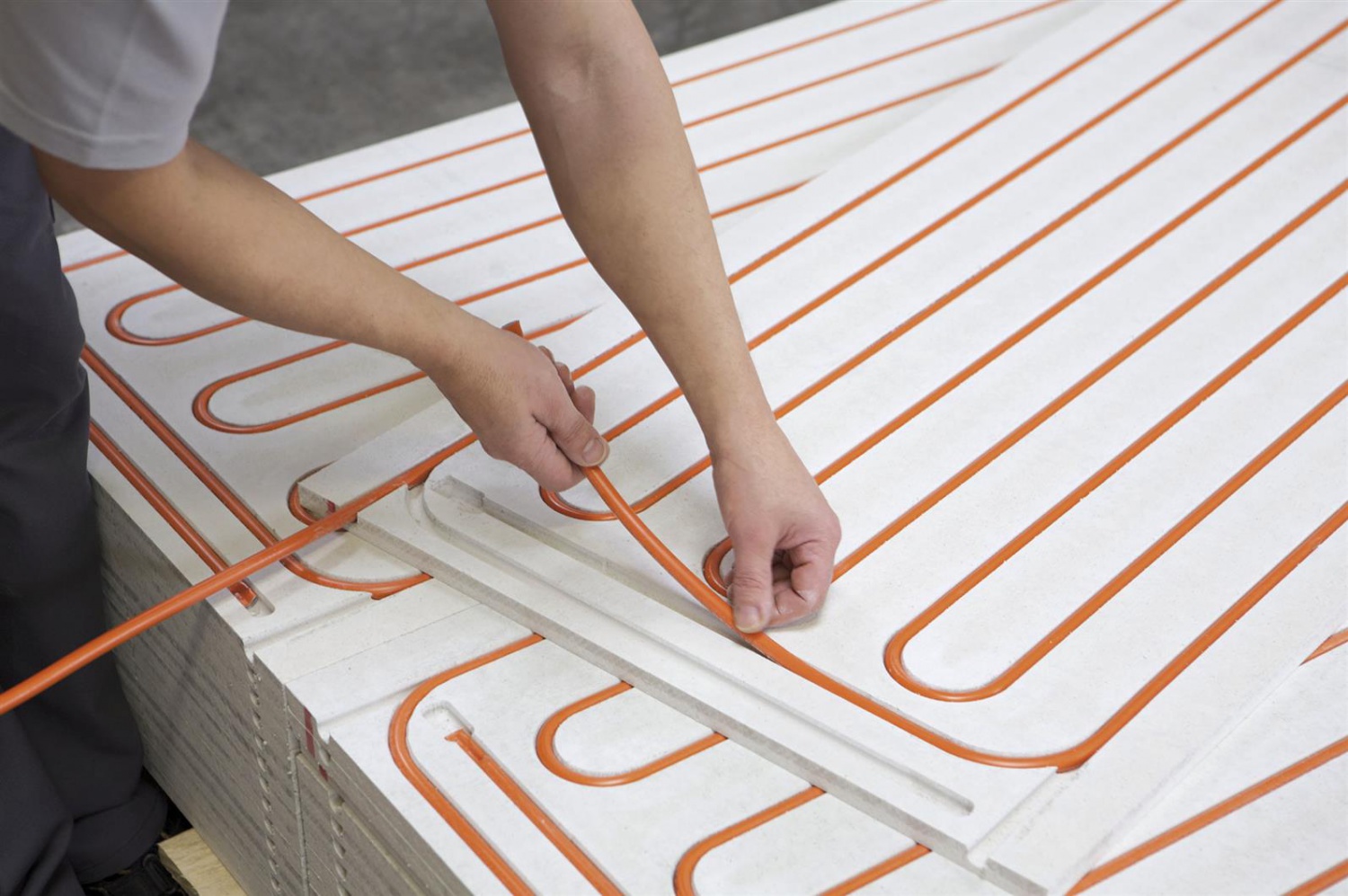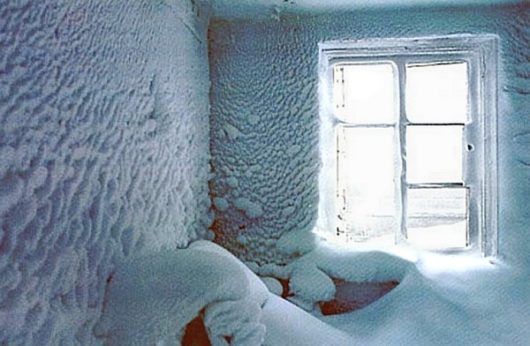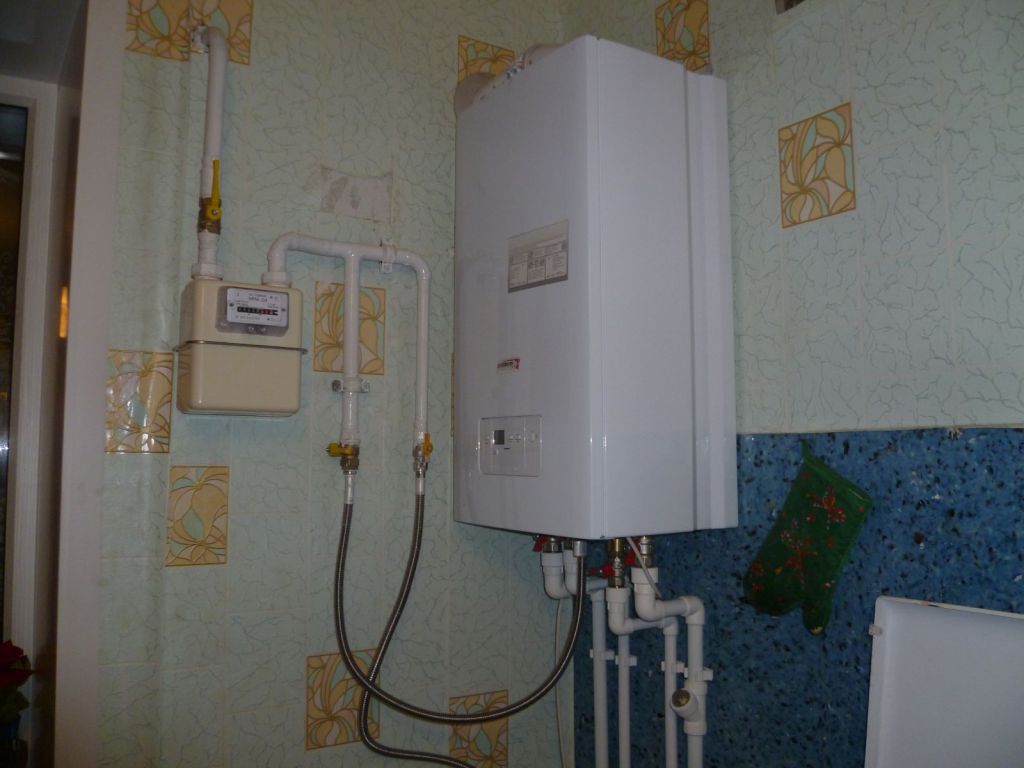Panel buildings are characterized by weak heat-saving properties. For their thermal insulation, it is worth using heat-saving materials of greater thickness than for houses made of wooden beams or bricks. Insulation of panel walls from the outside is the best option, which will save up to 50% of the heat inside the room.
This option attracts by the fact that there is no need to look for temporary housing during the renovation; after the completion of the work, the volume of the apartment does not change. External insulation protects panel houses from freezing, thawing, moisture accumulation, and other atmospheric phenomena.
Preparation for insulation
- Check the tightness of the joints between the slabs of the building. If there are cracks, they are thoroughly cleaned of dust, debris, dirt for subsequent sealing.
- After stripping, the joints are dried and primed. From the inside, the cracks are sealed with porous nairite, poroizol for maximum isolation.
- When the joints are processed, sealed, they are primed again, then coated with bituminous mastic.
- After the mastic has dried, they begin to clean the walls. They clean off the old peeled plaster, paint, after which the surfaces are primed, which will improve the adhesion of the wall and the adhesive.
Tools that the wizards use to work:
- Equipment for industrial mountaineering;
- Bucket, perforator, shovel and drill to it, hammer;
- Umbrellas for attaching insulation, construction knife.
Insulation materials
- Glass wool is a fibrous material with good elasticity and strength. It is produced in plates, when working with it, you must use personal protective equipment.
- Polyfoam - foamed plastic with low thermal conductivity, low price, ease of cutting, installation.
Modern thermal insulation materials have the advantages of their predecessors, new advantages. To carry out the work, use:
- Polyurethane foam, initially liquid, after hardening, a solid insulation, which is poured into the cracks, filling the smallest voids. It retains heat well, ideal for processing hard-to-reach places, after hardening forms a monolithic seamless surface.
- Extruded polystyrene foam, frost-resistant, low thermal conductivity, does not absorb water.
- Basalt cotton wool produced from basalt rocks. Differs in environmental friendliness, service life is up to 40 years.
- Mineral wool is a fibrous insulation made from silicates, slags, rocks. It attracts with environmental friendliness, ease of installation.
Advantages of external thermal insulation of panel houses
- The wall takes on an aesthetic appearance.
- Reduced mechanical, shrinkage deformation of the panels.
- Temperature fluctuations of the structure are reduced.
- The water absorption of surfaces is reduced, providing an optimal microclimate inside the dwelling.
- The insulation prevents the destruction of structures, creating a reliable moisture barrier.
- Sealing the joints between the slabs increases the heat capacity of the structure, provides maximum sound and vibration absorption.
Insulation technology of a panel house outside
- By dry method, including the installation of a heat shield on the outer surface of the building.
- Wet method with application of liquid building mixtures, for example, decorative plaster.
- Combined, including both of the above technologies.
The advantages of the wet method are that the material is applied in a continuous layer, preventing the formation of cold bridges on the surface of the walls. Decorative plasters give buildings an attractive appearance.
The advantages of the dry method are a wide range of thermal insulation materials, insulation options. The heat shield is robust, durable and weatherproof.
Work execution process
Laying begins from the bottom up, if necessary, a limiter is set at the bottom, set in level. Spread the adhesive mixture evenly under the sheet with a rotating motion. Another way is to apply insulation, shifting a couple of centimeters to the side, then, slightly pressing on the sheet, move it to the right place. Until the glue mixture has dried, the sheets are fixed with plastic umbrella dowels with a hammer and a perforator.
Important: The length of the dowel should be equal to the thickness of the insulation plus 6 cm. You will need 4 “umbrellas for 1 m2. Do not use metal dowels, which can easily become cold bridges, lowering the temperature inside the dwelling. "
Then, using a spatula, a reinforcing mesh is mounted over the heat-insulating materials, which they begin to glue from the end and front corners of the building. The glue mixture is applied to the surface, a reinforcing mesh is placed on top with an overlap of 10 cm, pressing it 2-3 mm into the glue. After that, the plane is leveled with 2 layers of glue. When the glue dries, they begin to finish the walls outside.
Thermal insulation with new materials using modern technologies
Polyurethane foam is not afraid of temperature drops, high humidity. It is produced in panels with a standard width of 1.115 m, any length, thickness - from 25 to 100 mm. Plates can be foil-coated, coated with paper and cached polyethylene, or paper with foil splashes. The panels are glued to the adhesive mixtures used for the installation of the foam, from above you can strengthen them with mushroom-shaped self-tapping screws.
Penoplex is several times denser than polystyrene, non-flammable, has a high density. It is produced in slabs of 12060 cm with a thickness of 2-10 cm, sometimes with 1 foil side. It is laid outside the panel walls as you like, vertically, horizontally, securing with umbrella screws.
Important: If you use penoplex, you should pay attention that ceramic tiles on its surface do not adhere well. For reliable adhesion, heavy-duty adhesives are used.
Useful Tips
- Before laying the thermal insulation material, the walls should be treated with antifungal compounds.
- Whatever work is carried out, it is worth using the building level.
- Thermal insulation outside is more effective than similar work indoors.
- In parallel with the thermal insulation of the walls, it is worth filling up the cracks in the window openings, under the windowsill, and glazing the balcony. This will significantly improve the indoor climate.
- Additionally, the installation of the system according to the "warm floor" principle inside the apartment will help to insulate the walls.
It is important to entrust the thermal insulation of the home from the outside to professionals.It is extremely difficult to implement this on your own, it is fraught with a lot of difficulties. It is worth discussing the cost of services with the contractor in advance, while it is worth contacting only those contractors who give a guarantee of the work performed.

